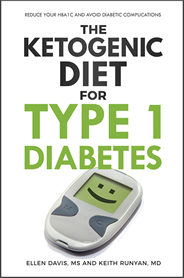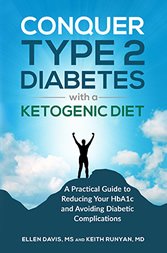High Intensity Interval Training
High intensity interval training (HIIT) is exercise which is brief, infrequent, and intense. It has different metabolic effects than low intensity exercise, like long walks or slow jogs, or an hour on the stairmaster at a slow rate.
Keep in mind that the levels of exercise are individually driven. If a person is way overweight and out of shape, what I describe as low intensity exercise might be high intensity exercise at first for that person. A high intensity exercise for a person with weak muscles might be just walking up hill for 2 minutes.
As a person begins to exercise, builds more muscle and gets stronger, they can increase the intensity appropriately. With that being said, here are some examples of high intensity exercise versus low intensity exercise:
| Low Intensity Exercise | High Intensity Training |
| Walking or jogging slowly for a mile 5 days a week | Walk for 5 minutes to warm up. Then sprint as fast as you can for 30 seconds, then walk for 4 minutes to recover. Repeat this 2-3 more times, and do the whole routine only 2 times per week |
| Riding a stationary bike at a medium speed for an hour 6 days a week | Ride a stationary bike at a medium speed for 10 minutes, then pedal as fast as you can for 30-60 seconds, then slow down again to medium speed for 4 minutes. Repeat 2-3 times, and do this 2 times a week. |
| Lifting weights using light weights and lots of repetitions. | Use the heaviest weight you can lift safely, and lift it very slowly. So for instance, you might do a leg press and take 10 seconds to push the weight away, then 10 seconds to bring it back, and then do that again 4-5 more times. The importance is to keep the muscle under a full weight load for the duration of the reps. |
All of these high intensity interval training methods have been used in various studies and protocols, and have been shown to increase insulin sensitivity, fat loss and fitness in a much shorter time then steady state, low intensity exercise like walking.
The key is in stressing your muscles hard enough and long enough to recruit all of the muscle fibers into action.
There are three types of muscle fibers:
- Slow twitch, which has stamina, a little strength, and a quick recovery
- Medium twitch, which has less stamina, more strength, and a slower recovery
- Fast twitch, which has little stamina, lots of strength, and a very slow recovery.
If you work your muscles at enough of an intensity for at least 90 seconds before they fail, all three types of muscle fibers will be called upon to do the work. Once all of these muscle fibers are called on to work, it causes a chemical cascade in the muscle which dumps the stored sugar/glycogen, which in turn increases not only the muscle's size and strength, but also its insulin sensitivity and fat burning potential.
At that point, the causes of why we get fat are being reversed, glycogen tanks are less full, muscle cells become very sensitive to insulin, insulin levels drop, and fat is released from the fat cells so it can burned for fuel. Now the process of good health and weight is going in the right direction.
Here's a great video featuring a talk by Doug McGuff, the physician who wrote Body by Science: A Research Based Program to Get the Results You Want in 12 Minutes a Week, my go-to book on high intensity interval training.
The video is long and starts slow, but he explains the differences between high intensity exercise and low intensity "aerobic" exercise. He also does a good job of explaining why low intensity exercise like walking/jogging is a factor in metabolic dysfunction.
Body By Science from Pinpoint Multimedia on Vimeo.
Resources for More Reading on High Intensity Interval Training
- Why We Get Fat: And What to Do About It by Gary Taubes
- Body by Science: A Research Based Program to Get the Results You Want in 12 Minutes a Week
- The Slow Burn Fitness Revolution: The Slow Motion Exercise That Will Change Your Body in 30 Minutes a Week
- Power of 10: The Once-A-Week Slow Motion Fitness Revolution (Harperresource Book)
- Short-term sprint interval training increases insulin sensitivity in healthy adults
- Aerobic Interval Training Versus Continuous Moderate Exercise as a Treatment for the Metabolic Syndrome
- Interval training may be best type of exercise to affect metabolic syndrome
- Extremely short duration high intensity interval training substantially improves insulin action in young healthy males
- Exercise training increases insulin-stimulated glucose disposal and GLUT4 (SLC2A4) protein content in patients with type 2 diabetes
- Similar metabolic adaptations during exercise after low volume sprint interval and traditional endurance training in humans.
Disclaimer: I am not an exercise physiologist. I've just done research on HIIT, and had some good results using it myself. Don't start this type of exercise program without learning more or hiring a knowledgable trainer. You may also want to get a checkup and ask your physician before you begin.
Done with High Intensity Interval Training, back to Why We Get Fat
All of my books are available in electronic PDF, and now in paperback on Amazon!
 |
 |
 |
|
Buy paperbook on Buy paperback on Amazon Buy the e-Book via Paypal |
Buy paperback on Buy paperback on Amazon Buy the e-Book via Paypal |
Buy paperback on Buy paperback on Amazon Buy the e-Book via PayPal |